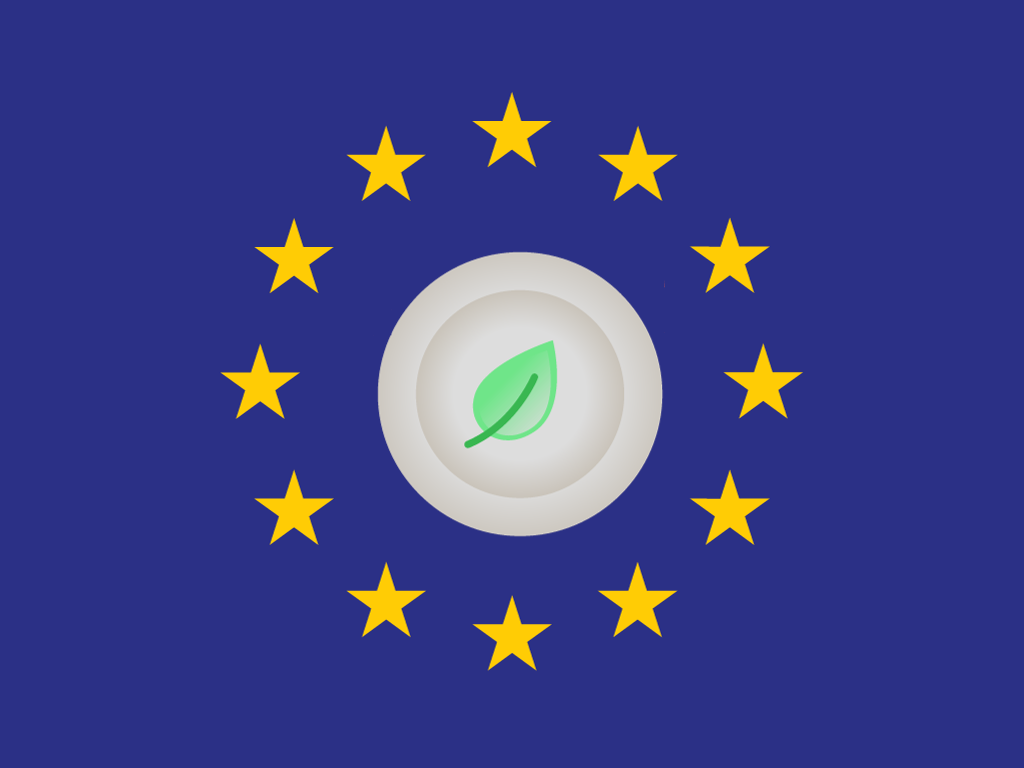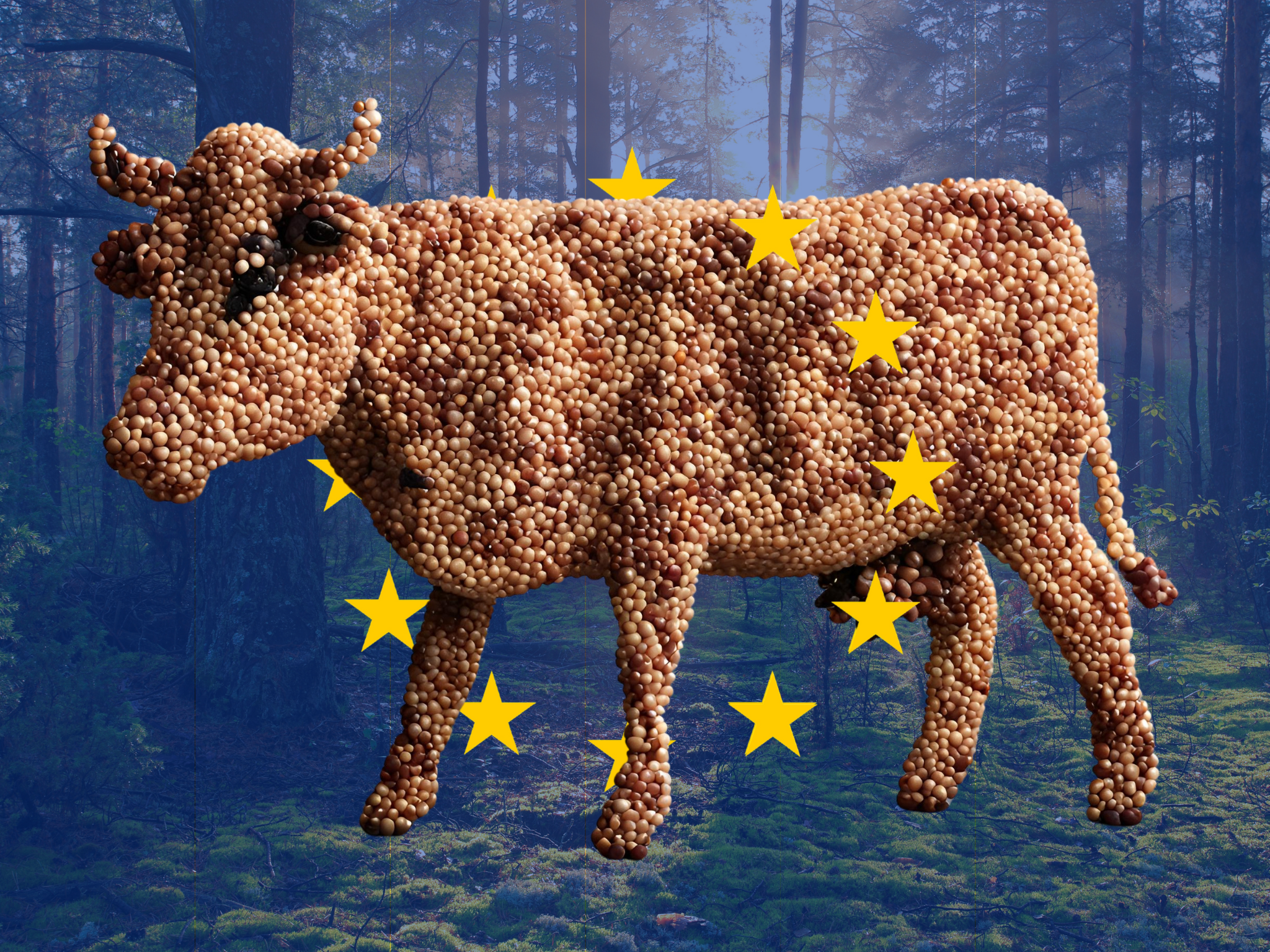Shifting Away From Meat is Crucial for the EU’s Food Security & Climate Goals
5 Mins Read
Experts at Wageningen University argue that livestock numbers need to be reduced while a transition to plant-based diets should be welcomed by the EU.
Every year, academics from Wageningen University & Research (WUR), the EU’s top agriculture institution, present the Mansholt Lecture. Highlighting the dilemmas faced by the region’s farm sector, it’s inspired by Sicco Mansholt, a Dutchman who was the bloc’s first agriculture commissioner and architect of its Common Agriculture Policy (CAP).
The CAP aims to tackle biodiversity loss, species decline, and planetary harm – but many of its current policies fail to do so. And of those that have promise, most are derailed by Big Ag’s big lobbies. Nearly 30% of the CAP’s budget is spent on agriculture, which is important considering the sector accounts for 12% of EU emissions.
However, 80% of this expenditure is directed to livestock farming, with 44% alone going to crops for animals that humans end up eating. This makes little sense when you consider that animal proteins provide only 35% of the EU’s calorie supply, and generate 84% of its agricultural emissions. Plant-based farming, on the other hand, receives less than a quarter of the CAP’s money.
And even though farmers themselves are calling on people to eat less meat and asking policymakers to draw up plans to transition to a plant-based food system, EU leaders seem hesitant in intervening.
These are among the five major dilemmas that the WUR experts outlined in a new paper accompanying the Mansholt Lecture. The 80-page report contends with the EU’s pursuit for self-sufficiency, the future of animal agriculture, whether climate targets should be a shared responsibility among member states, the coexistence of food and non-food biomass, and policy interventions to reshape consumer behaviour.
Reforming livestock farming means eating more plant-based

WUR notes that the EU can be considered food-secure for now, but that it’s highly dependent on imports of fertilisers, energy and animal feed. And while the region can produce enough food for its population at current rates, this will only be possible if the production of protein crops and oilseeds is increased, and people begin reducing their meat consumption.
Conversely, if Europeans continue to eat as much meat as they do now, reducing livestock’s impact on the climate and biodiversity will be a challenge, the author wrote. Addressing livestock numbers, therefore, is a priority.
“Without reducing the livestock population, this would require major adaptations to technology and feed systems, including feed additives and new housing systems and forms of manure processing,” the report reads, adding: “In practice, the impact of many of these innovations is often disappointing.”
Growing animal feed would also compete with the production of crops suitable for human consumption. An alternative approach would be to deindustrialise livestock farming, utilising grasslands, raw materials and waste streams that don’t compete with human food, as well as food waste – think retail products past their sell-by dates.
“In this more circular approach, the primary role of animals would be to convert these non-human food streams, with the number of animals in a region determined by the availability of these resources, rather than global demand for animal products,” the report states.
This will also only be possible if meat and dairy consumption is curbed – the EU already eats 80% more protein than is recommended, and 60% of this comes from animals. “A partial shift towards plant-based proteins in high-income countries could help to achieve this,” according to the WUR researchers.
And in terms of nature and climate targets, a gradual transition to plant-based eating has been shown to reduce demand for animal products and reduce emissions, while also supporting the ambitions to improve public health – this combination of human and planetary health gains could be a catalyst for greater adoption of vegan diets.
Meanwhile, land use has historically been the main driver of biodiversity loss in the EU. Now, though, 78% of this is attributed to intensive livestock systems. So neither land sparing nor land sharing strategies would be enough to meet biodiversity targets – reducing livestock populations, and thus shifting to plant-based diets, is critical.
Policy intervention critical to changing consumption patterns

The report comes on the heels of the confirmation hearing of Christophe Hansen, the incoming EU agriculture commissioner, who suggested that meat consumption was something policymakers shouldn’t get involved in.
The experts at WUR, however, rejected that idea. “Interventions are needed to support consumer behaviour towards more healthy and sustainable diets,” they wrote. “The hesitation to intervene in our food choices stands in stark contrast to the commonly accepted use of pricing strategies to reduce demand for fuels, as well as tobacco and alcohol.”
They added that there’s societal support for more active government interventions to stimulate healthier and more climate-friendly consumption behaviours. Adopting an interventionist approach to shift dietary patterns, the academics argued, is crucial for progress.
But they acknowledged that the public steering of consumer behaviour is a “socially and politically delicate matter”. Price interventions like meat taxes (à la Denmark) can be effective, for example, but stir controversy too.
Instead, a combination of different interventions – like information about the consequences of meat consumption, preparation tips, and price differences between different compositions of plant-based foods – can be much more impactful than one-off measures.
The paper cites the Nuffield intervention ladder, where oft interventions like information move up to harder measures like restrictive legislation. The interventions on supporting more plant-based diets, it says, are currently mostly related to monitoring and informing. But the EU strategy for sustainable textiles is already moving up this ladder to curb fast fashion, an effort that could be replicated for animal agriculture too.
Other interventions include “communication strategies, pricing incentives, informative labelling, regulations, and bans, or indirect strategies such as binding agreements with the agrifood sector and supermarkets”, says the report.
“Although countries and regions are confronted with distinct challenges, in general, more sustainable and healthy diets are required,” it adds. “Sustainable diets, for example, lean towards more plant-based and vegetarian diets, and to more local and seasonal diets.”



